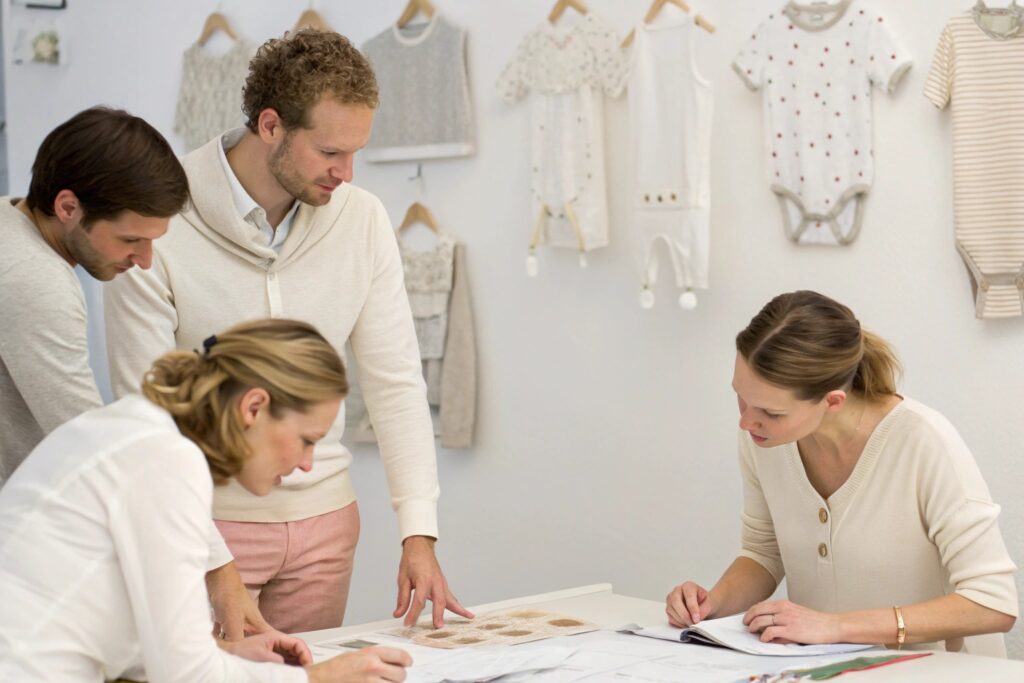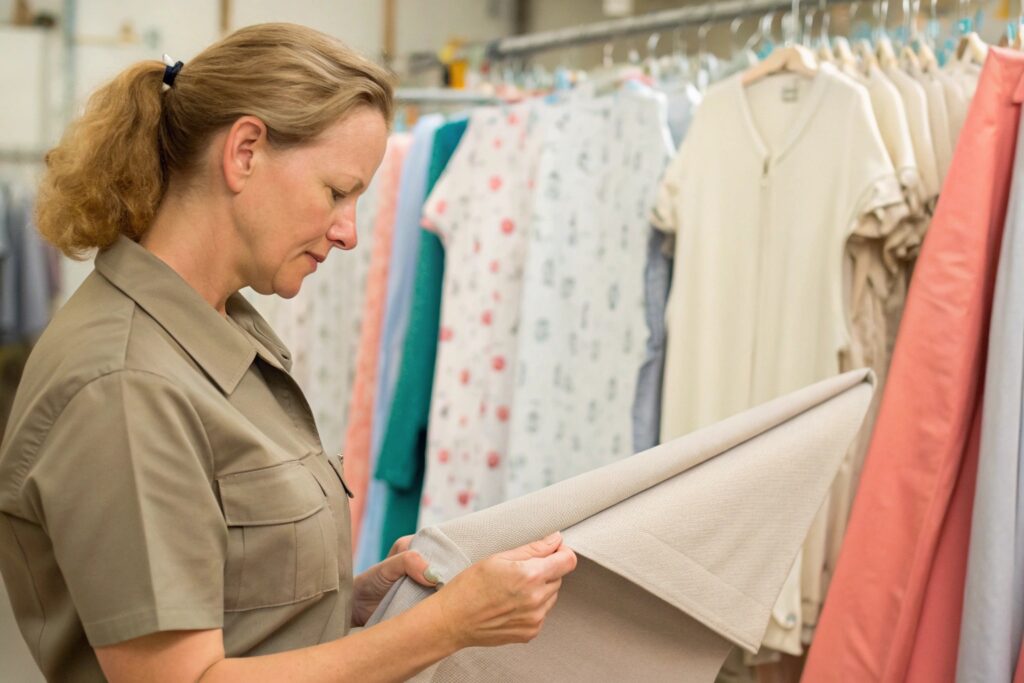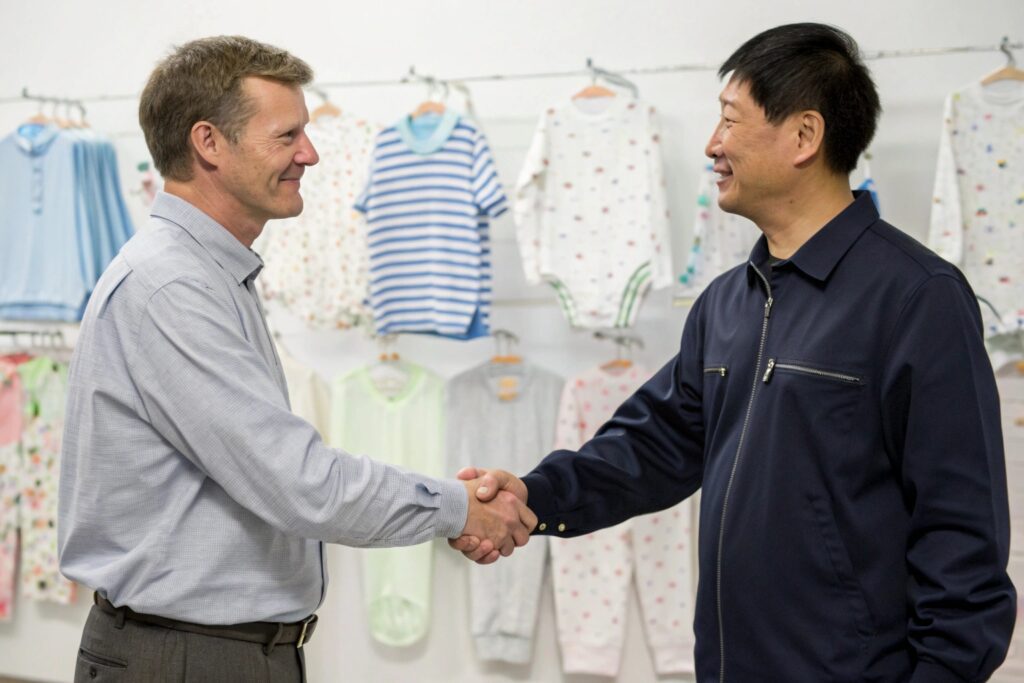Partnering with a babywear factory in China offers huge opportunities for quality, affordability, and scalability—but it also requires careful planning and clear communication.
When working with a Chinese babywear factory, expect a structured production process, detailed sampling rounds, strict compliance requirements, and relationship-building for long-term success.
Here’s exactly what you should know before starting your collaboration.
How the Babywear Production Process Works Step-by-Step?
Understanding the full manufacturing journey helps you stay organized, set realistic expectations, and avoid costly surprises.
The typical babywear production process in China moves through design review, material sourcing, sampling, bulk production, quality control, and final shipment.

Standard production stages:
| Stage | What Happens |
|---|---|
| Design and tech pack review | Factory reviews your specs, clarifies questions |
| Material sourcing | Fabrics, trims, and accessories are sourced |
| Prototype sampling | First sample (or several) made for review |
| Revisions and PPS (Pre-Production Sample) | Final approved sample before mass production |
| Bulk production | Garments produced, inspected, and finished |
| Final QC and shipping | Inspection reports provided, goods prepared for export |
Timeline from start to finish usually takes 4–6 months, depending on complexity and how fast approvals happen.
At Fumao, we walk every client through a production milestone calendar so there’s no confusion about what happens when.
What Communication and Sampling Timelines to Prepare For?
Good babywear factories value communication—but they also juggle multiple clients and production lines, especially during peak seasons.
Expect regular updates, structured sample feedback cycles, and a few unavoidable waits during fabric booking, sample making, and production scheduling.

What to expect:
| Phase | Typical Timeline |
|---|---|
| Initial sample (prototype) | 2–4 weeks after design approval |
| Sample revisions (if needed) | 2–3 weeks per round |
| Bulk production start | 4–6 weeks after PPS approval |
| Final production (bulk) | 6–10 weeks depending on order size |
| Shipping | 3–6 weeks based on air or sea freight |
Pro communication tips:
- Always send feedback in bullet points with clear photos if changes are needed
- Confirm timelines in writing after each approval (e.g., “PPS approved 5/10/2025; bulk to start 5/12/2025”)
- Be ready for seasonal delays (especially before Chinese New Year or Golden Week)
Factories appreciate responsive, decisive communication—it speeds up every stage.
How to Ensure Compliance with Safety and Quality Standards?
Babywear must meet strict safety laws worldwide. Your factory must be more than just good at sewing—they must understand compliance deeply.
To ensure babywear compliance, require safety-certified fabrics, request third-party lab testing, verify factory certifications, and audit samples against CPSIA, REACH, OEKO-TEX®, and EN 14682 standards.

Key safety and quality checks:
| Compliance Requirement | How to Handle It |
|---|---|
| Fabric certification | Request OEKO-TEX® or GOTS certificates |
| Snap and trim pull testing | Ensure strength against baby tugging |
| Lead, phthalate, and chemical testing | Arrange with labs like SGS or Intertek |
| Flammability testing | Required for sleepwear (ASTM F1816) |
| Labeling and tracking compliance | CPSIA for U.S., REACH for EU markets |
At Fumao, we manage fabric certification sourcing, lab booking, and pre-shipment inspections so brands launch safely.
Without safety focus, you risk customs rejections, product recalls, or retailer bans.
Tips for Building a Strong, Long-Term Relationship with Your Factory?
Great production isn’t just about transactions—it’s about trust, collaboration, and growing together.
To build a strong, long-term relationship with your Chinese babywear factory, communicate clearly, respect timelines, give constructive feedback, and think beyond just the first order.

Relationship-building tips:
| Practice | How It Helps Your Brand |
|---|---|
| Provide clear, detailed feedback | Factories appreciate precision over guesswork |
| Respect production lead times | Rushing causes mistakes; plan properly |
| Be flexible but firm | Allow reasonable adjustments, but maintain quality standards |
| Visit the factory if possible | Face-to-face visits build strong trust |
| Plan for reorders early | Loyal clients get priority scheduling |
Factories are more willing to go the extra mile (faster samples, flexible MOQs, better payment terms) for brands who prove reliable and professional over time.
Conclusion
Working with a babywear factory in China requires preparation, patience, and partnership. By understanding the full production process, maintaining clear communication, prioritizing safety compliance, and nurturing strong relationships, you’ll set the stage for beautiful, successful collections—and a trusted supply chain for years to come.










